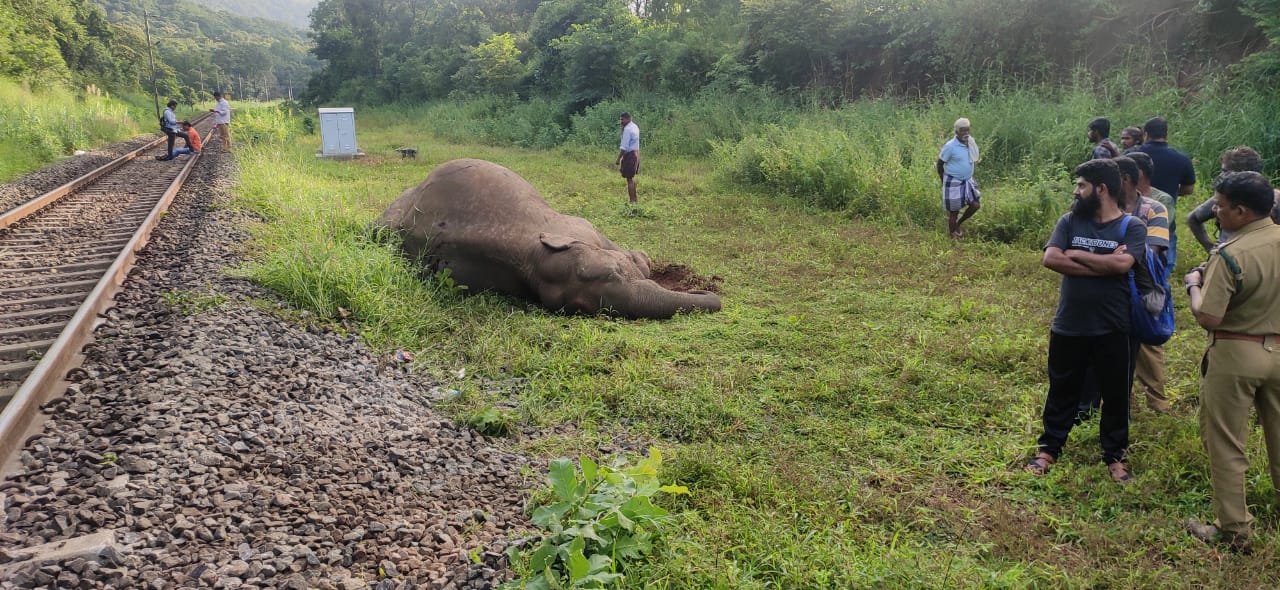A 20-year-old female became the 27th elephant to die on the killer stretch in the last 27 years.

The female elephant killed on Friday by Vivek Express at Kanjikode. (Supplied)
A 20-year-old female elephant was killed by a train while trying to cross the railway track at Kottamutti near Kanjikode in Palakkad district in the early hours on Friday, 14 October.
The elephant, part of a wild herd in search of fodder and water in the eastern Walayar forests of Kerala, was crossing the B Line connecting Palakkad with Tamil Nadu’s Coimbatore at around 3 am, when it was hit by the speeding Kanyakumari-Dibrugarh Vivek Express, officials said.
The elephant was reportedly flung 25 metres by the impact.
The railway stretch, which passes through dense forests, has literally been a death trap for wild elephants in the last quarter of a century, with at least 26 being run over by speeding trains before Friday’s incident.
The death of other animals often goes unnoticed.
According to forest officials quoted by the media, a baby elephant that formed part of the herd was also injured in Friday’s incident. But the herd took the baby to the nearby Vadassery hills.
Forest veterinarians are attempting to trace and treat the baby elephant.
Conservation activists say climate change and deforestation have caused extreme food and water scarcity in the Kanjikode-Walayar-Madukkarai inter-state stretch of forests where two railway lines pass through traditional elephant corridors.
The governments of Kerala and Tamil Nadu, in association with the Railways, have tried several methods to avert such incidents, including building fences along the tracks using discarded rails. But without much success.
Friday’s incident happened just a couple of days after the Tamil Nadu Forest Department announced a plan to use Artificial Intelligence (AI)-based solutions to prevent elephant deaths on the stretch.
Though strict instructions have been issued by the Railways to maintain slow speeds while passing through the stretch, the rule is rarely followed, especially during the night and early morning hours.
The railway stretch is part of the arterial line that connects Kerala with the rest of India.
Recently, the Kerala had once again urged the Railways to reduce the speed on the Kanjikode-Walayar stretch to 45 kmph instead of the maximum of 65 kmph currently allowed.
Prior to Friday’s incident, the most recent elephant deaths on this stretch were recorded in November 2021 when three female elephants were crushed by the Mangalore-Chennai Express.
Since 1978, 26 elephants have been killed by trains on this stretch, 14 of them between 2016 and December 2021, as per records maintained by the Palakkad Division of Southern Railways.
“The permanent solution is to stop using the B Line that passes through the core of the forests and construct a new line parallel to the national highway between Madukkarai and Kanjikode,” conservation activist S Guruvayurappan told South First.
Going by Forest Department documents, most of the elephants were killed in a 5.8 km stretch of the B Line on either side of Walayar railway station — 4 km towards Ettimadai and 1.8 km towards Kanjikode.
The B line passes through the reserve forest for 23 km between the Madukkarai and Kanjikode stations.

Apr 23, 2024

Apr 23, 2024

Apr 23, 2024

Apr 23, 2024

Apr 23, 2024